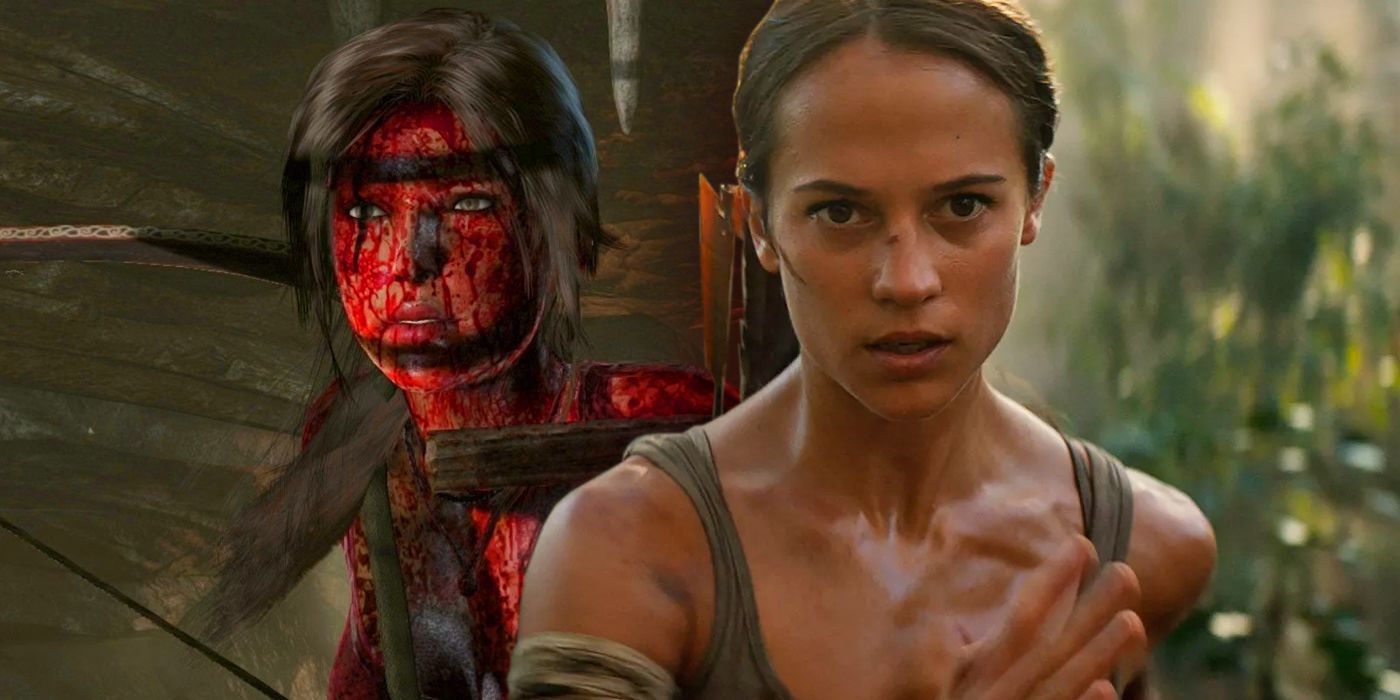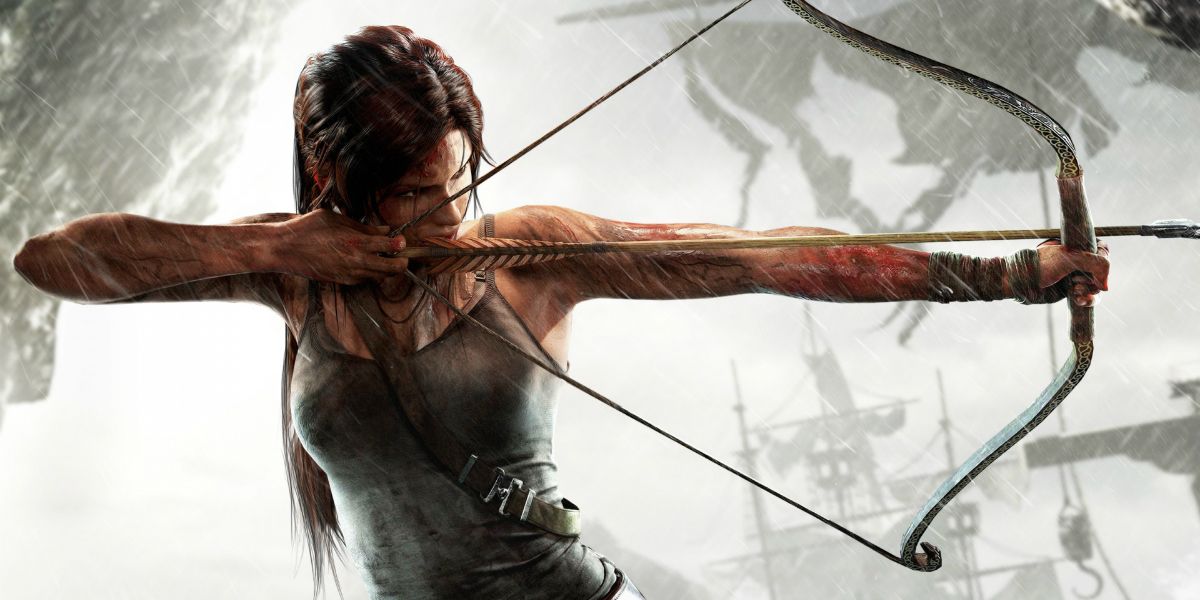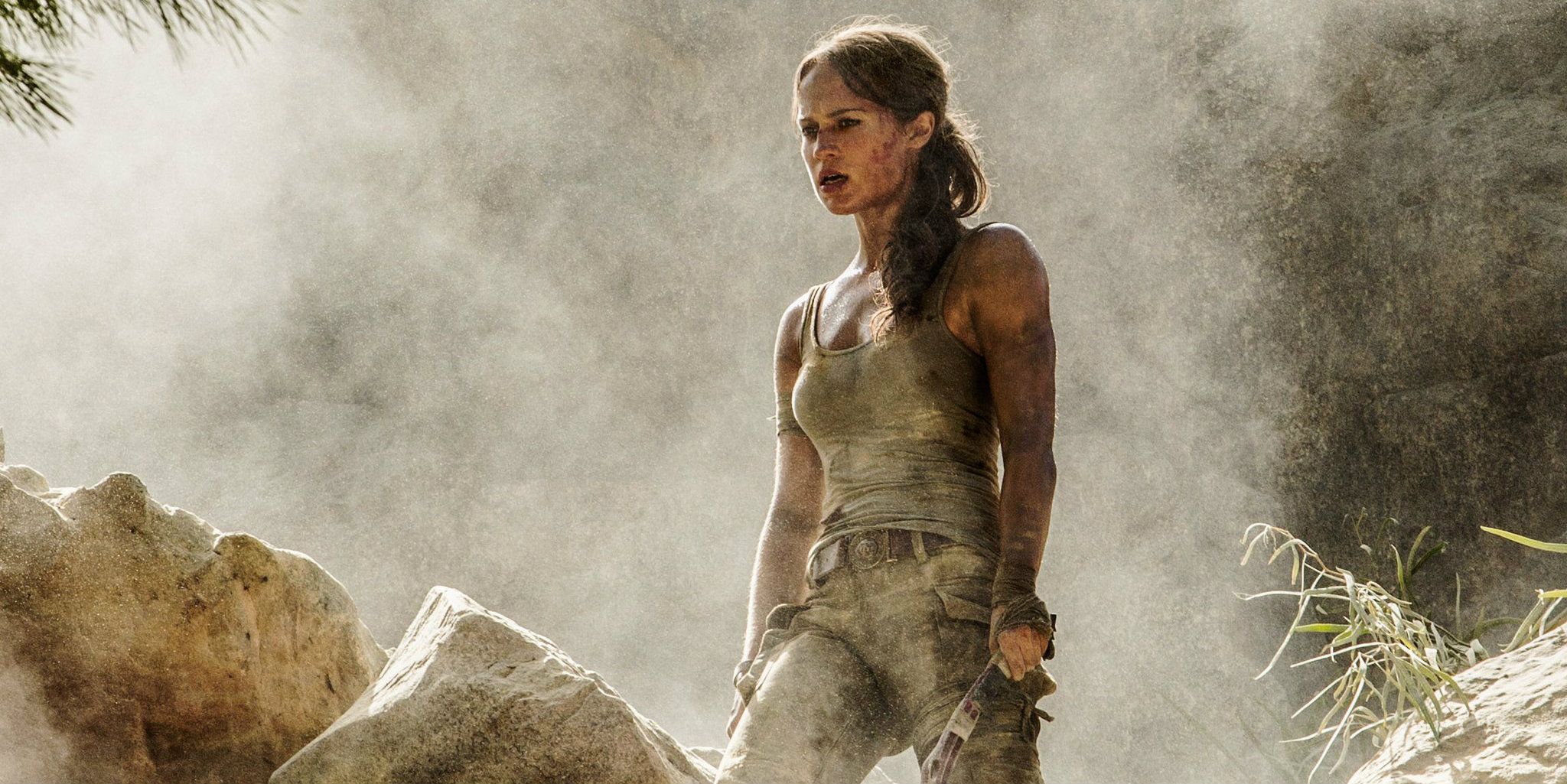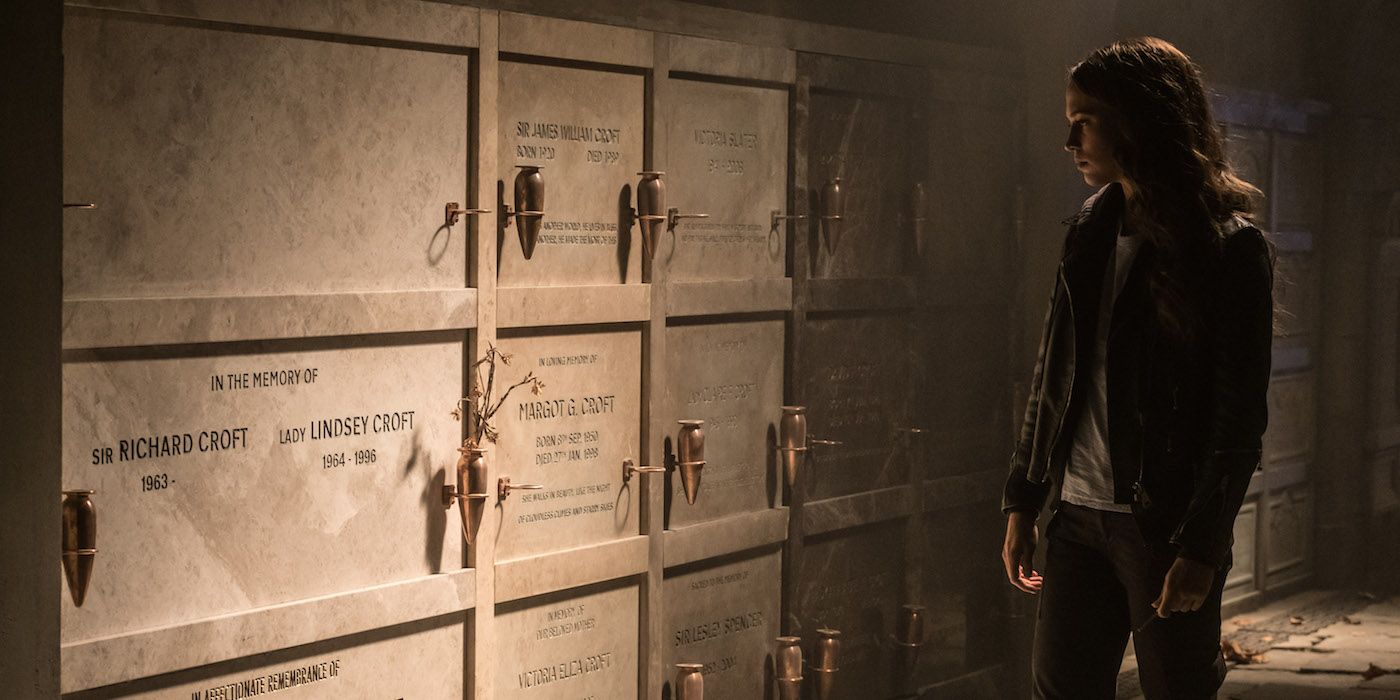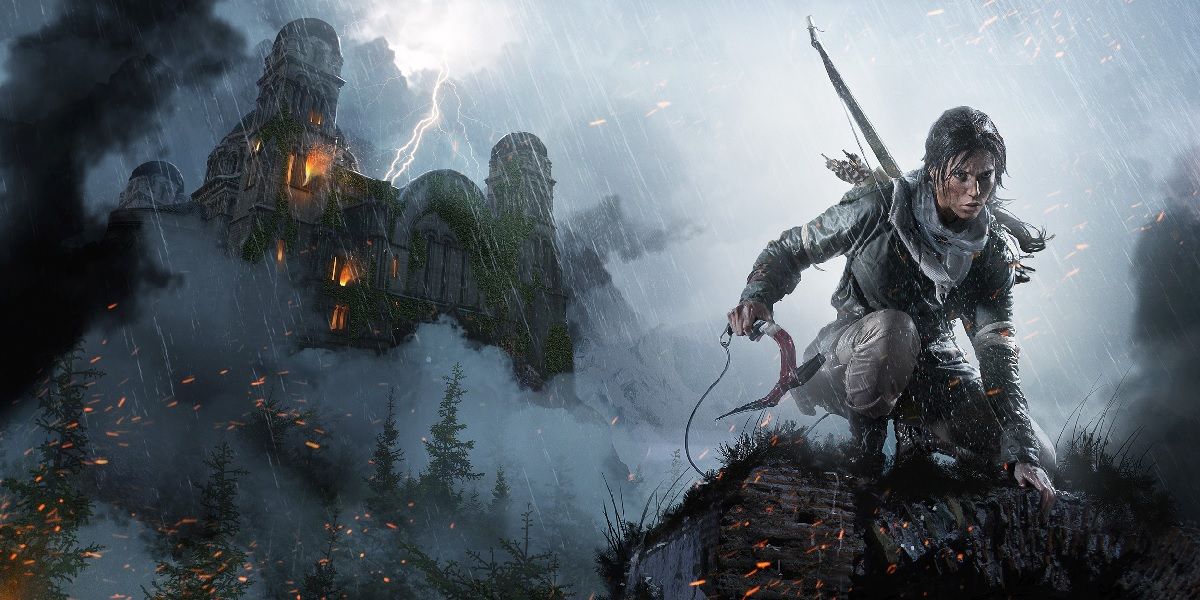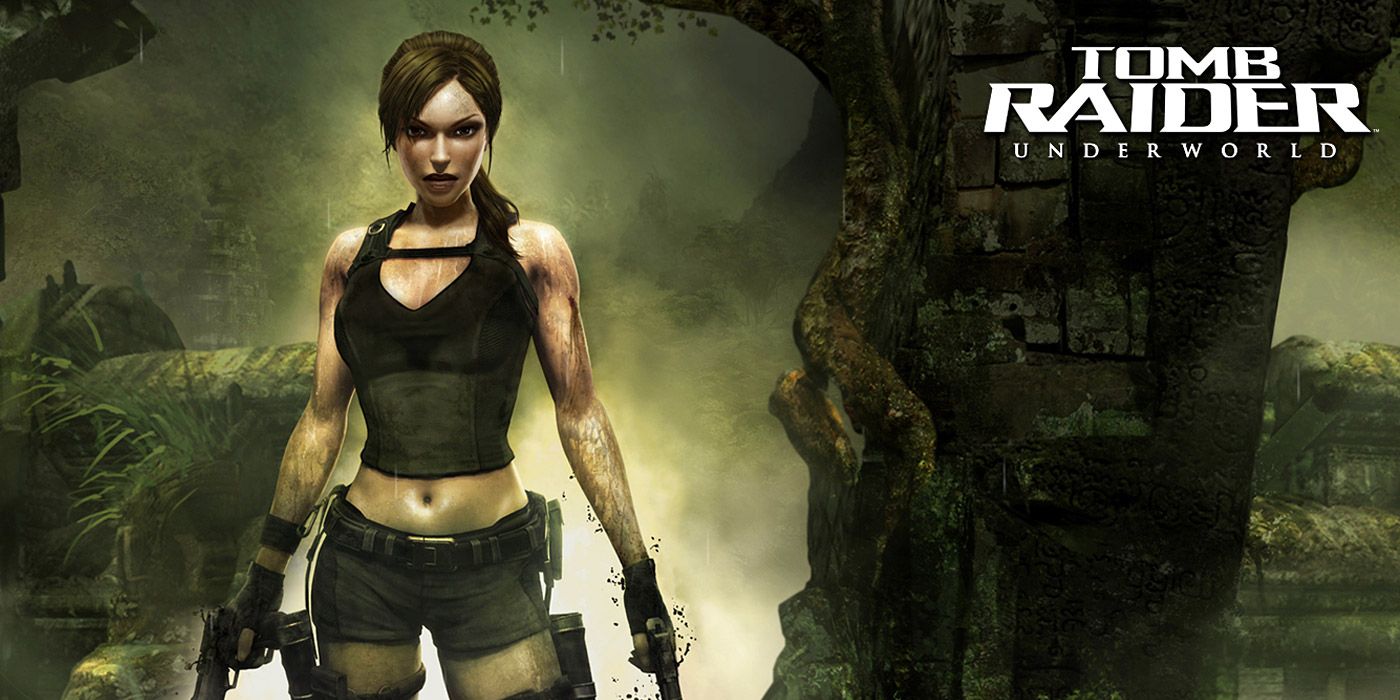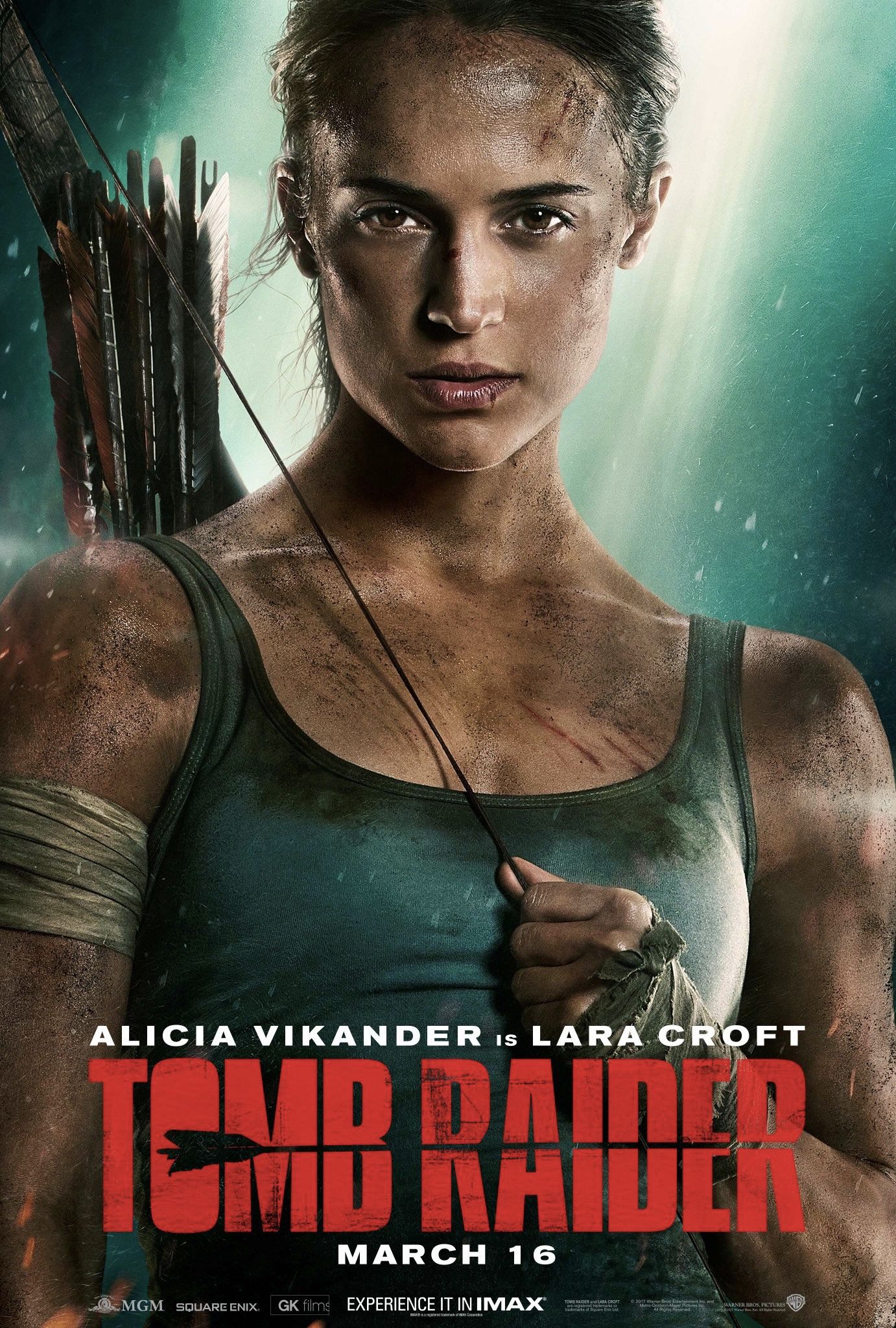Warning: SPOILERS ahead for Tomb Raider
-
The new Tomb Raider is an incredibly faithful video game adaptation, although it does have one major change to the Lara Croft of the source that completely changes her character. Aside from Indiana Jones, Lara is easily one of the most iconic fictional explorers in all of pop culture. It's perhaps odd, then, that for such an important video game icon, she's been rebooted - not once, but twice!
After making waves with her 1996 debut, the adventures of Lara Croft continued until 2003's lackluster Angel of Darkness, which paved the way for the first reboot, 2006's Tomb Raider: Legend. The Legend series got off to a strong start, but ultimately sputtered out with 2008's obviously-rushed Underworld, the failure of which led to a second reboot in 2013, simply titled Tomb Raider. The new film is based on that version of Lara Croft, and is also a reboot of the film series, discarding the previous Angelina Jolie films.
Related: Tomb Raider Review
With a history going back over twenty years and stretching across three distinct continuities (four if one includes the Angelina Jolie movies), there's a lot of mythology to unpack, and a lot of plot points for the new movie to choose to implement or ignore. In some ways, Alicia Vikander's Lara Croft movie is extremely similar to the games (especially the 2013 game upon which it's primarily based), but it also makes some significant changes.
This Page: How Tomb Raider Adapts The 2013 Game
Tomb Raider Takes A Lot From The Game...
The Angelina Jolie Tomb Raider movies were based on the original continuity started by the 1996 game, but made changes to the Lara Croft character - some of which were carried over to the 2006 video game reboot. Unlike the Jolie films, which took Lara and created original cinematic adventures for her, the new Tomb Raider is a direct adaptation of the 2013 reboot.
In both the 2013 game and the 2018 movie, Lara is younger and less experienced than ever before. She's not the stoic ice queen of the older continuities. She's not "cool" yet. She's raw and afraid, but nonetheless armed with an unshakeable determination and a talent for survival. Being a relatively faithful adaptation of the game, Tomb Raider includes many elements from its source material, including Lara's signature outfit and bow-and-arrow weapon, the Matthias character, the sinister Trinity organization, and a slew of action sequences.
Notably, Lara's harrowing escape from a rusted out jet plane hanging precariously from a waterfall is faithfully recreated in the film, complete with a spectacular parachute sequence which sees Lara crashing through a forest before crash-landing in a heap alive, but not unscathed: Lara gets impaled through her abdomen by a wooden branch, a nod to a similar injury she receives in the game, though during a different scene, which is not present in the movie.
...But The Movie Makes Some Changes
Of course, Tomb Raider is an adaptation, not a regurgitation. There are many changes to the source material, some big and others small. In the game, Lara went to the island as part of a documentary crew, all of whom are shipwrecked. Only a few manage to make it off the island alive. In the movie, Lara's only partner is an original character, Lu Ren (Daniel Wu), whose boat she hires for the journey to the island, searching for the secret of Himiko and her father's final expedition. Speaking of Himiko, her powers are significantly different in the film (and eerily similar to an ancient artifact seen in one of the Uncharted games).
Matthias (Walton Goggins) is a cult leader in the game, determined to release Himiko from her imprisonment in the hopes that he will be able to finally leave the confines of the accursed island of Yamatai. In the movie, Matthias is a contractor: an employee of Trinity, who hired him to uncover Himiko's tomb and capture whatever power may be hidden on the island. He can't leave the island, not because of powerful storms, but because Trinity will not let him leave until the job is done. He's been trapped for over seven years, but he wouldn't dare cross Trinity or return empty-handed.
The BIG Difference Tomb Raider Makes
In the 2013 game, Lara's first kill is presented as a big deal, and rightly so: it's a huge moment for her, the taking of another human life. She had no choice in the matter; he was going to kill her if she didn't take him down first, so she blows his brains out with a handgun. The 2013 entry was the first Tomb Raider game to receive an "M for Mature" rating, and it shows: the bullet wound is shown in grisly detail, and the man's death rattle is haunting, as is Lara's shocked reaction to what she had just done.
The scene is adapted for the movie, though she doesn't shoot him. instead, she hits him in the head with a rock and then drowns him in a shallow puddle of water and mud. It's not a gory scene, but it's still quite violent, and pretty intense for a PG-13 movie.
Read More: How Violent Is Tomb Raider?
It's here, however, where the biggest change to the Tomb Raider mythology occurs. After killing the soldier, Lara sees a tall, bearded man watching her. She follows him, chasing him up a mountain to his lair, and confronts him. To her astonishment, it's Richard Croft (Dominic West) - her father! He's not dead after all, but has been alone on the island for seven years, hiding from Matthias and his soldiers. He initially believes that Lara is just a hallucination sprung from his lonely and unstable mind, but she manages to convince him that she's really his daughter. However, their touching reunion is short-lived, because "Crofts have responsibilities," and they've got a job to do.
From that point on, the elder Croft plays a key role in the events of the film, working alongside his daughter and reluctantly leading Matthias to the tomb of Himiko. From a cinematic standpoint, it works better to have Lara and her father together than to just have her exploring by herself, and the final act of the film is definitely improved by having the two Crofts serve as each other's motivation, adding emotional stakes and dramatic tension to the already-exciting infiltration of Himiko's tomb.
How Lara Croft's Father Is Different in the Games
In the 2013 reboot, Richard Croft was dead before the events of the game. In fact, he was murdered (though his death was staged by Trinity to look like a suicide), with his body being discovered by his young daughter, Lara. Richard was also dead in the 2006 Legend series, though he was killed by Jacqueline Natla, the main villain of Tomb Raider: Anniversary, while searching for clues to the disappearance of his wife, Amelia.
In the original continuity, Lara's father was named Henshingly, and he and his wife had a very different relationship with their daughter. On one hand, they were both alive, but on the other, they had publicly disowned Lara for her adventuring lifestyle and refusal to settle down and get married. Henshingly is mentioned a couple of times in the classic series, but his only true appearance is as a mourner at Lara's memorial service in 1999's Tomb Raider: The Last Revelation.
Related: Tomb Raider Lifts A Huge Plot Twist From Uncharted
Fun fact: The name Richard was first used for Lara's father in the 2001 Angelina Jolie film, where he was played by Jolie's real-life dad, Jon Voight. He was also a much more significant character than in the games, a change which was incorporated into the Legend continuity, and managed to stick around for the 2013 re-reboot.
Richard Croft vs. Amelia Croft in Tomb Raider: Legend & Underworld
In the new movie, much of Lara's motivation comes from her refusal to accept her father's death and her determination to find him, believing that he's still alive, somehow, somewhere. This is taken from Tomb Raider: Legend, though she's searching for her mother, Amelia Croft, and the circumstances of her disappearance are significantly different from Richard's. In Legend, Lara and Amelia were involved in a plane crash in the Himalayas.
Lara was only a young child, but the two Croft ladies made their way to an ancient temple where they discovered an ancient artifact, which Amelia inadvertently activated, transporting her to Helheim, from Norse mythology. She's written off as dead, and the whole story about supernatural portals gets dismissed as the ramblings of a frightened kid.
Undeterred, Richard and Lara dedicate themselves to seeking out lost treasures and ancient artifacts in the hopes of one day finding Amelia and bringing her home. Richard never sees Amelia again, but Lara finally finds her mother near the end of Tomb Raider: Underworld. Sadly, she has already been corrupted into a mindless zombie, or a thrall, and Lara is forced to put her down with a barrage of gunfire. There's no joyous, heartwarming reunion between parent and child like the one seen in the new movie.
-
Tomb Raider is a clever adaptation, taking iconic images and elements from the 2013 game, repurposing lore from the 2006 game, and adding some new facets while throwing in one hugely important twist of its own to create its own take on the Lara Croft mythology. The result is a solid action/adventure movie which is further bolstered by a charismatic performance from Alicia Vikander.
If the film is successful and earns a sequel, will it adapt the story of Rise of the Tomb Raider, the most recent game and sequel to the 2013 reboot? Or will it strike out on its own and tell an original story? What direction would you like to see Tomb Raider go next? Sound off in the comments!
More: Alicia Vikander Makes A Better Lara Croft Than Angelina Jolie

